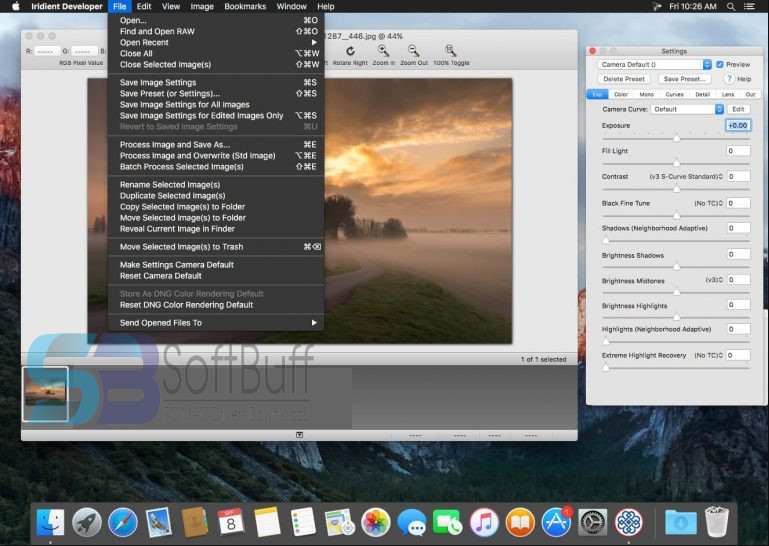

That was my only real problem with the software from a performance standpoint. Hopefully in the final release they optimize the software further to not peg out the entire CPU, or give us the option to limit resource usage. So on less powerful systems, where the conversion of a large batch of images would take even longer, I would definitely recommend waiting to do the conversion until a time when you can go without your computer for the duration of the conversion process. I looked in the settings to see if there was a way that I could limit it processor usage or anything like that, and at this point there is not. When the conversion process ended the system went back to normal and everything was fine, but in the future, I will probably not do a large conversion like that when I could be doing other work, instead starting it before bed or a meal. My system was pegged to the point that it was slow and barely responsive while I was trying to do other things during the conversion process (not something I have experienced before with this machine).

I converted 526 RAF files to DNG using the Iridient X-Transformer, and it completely pegged my CPU to 100% for the duration of the conversion process, which was about 25-30 minutes. My point here is not to brag, but to point out that my the system I am testing this on is not underpowered at all. I have an enthusiast grade CPU, the Intel I7 5820K, which runs 6 cores and 12 threads (the software sees 12 cores, not 6) that runs at 3.6Ghz, but I have mine overclocked to 4.3Ghz. But I wanted to share my experiences with it today and talk a bit about how I have worked it into my workflow to allow me to continue to use Lightroom.įirst off, this software chews up your CPU, no way around it. It is not perfect, but I would not expect it to be issue free, it is a beta release after all. The software is currently in Beta, and I recently downloaded it and have been playing around with it. Which you can then use in Lightroom just as you would a RAW RAF file, with the benefit of not having the sharpness issues that an RAF file imported into Lightroom would have. How – you might ask? Iridient X-Transformer, an RAF to DNG converter that utilizes the Iridient Developer engine to convert your RAF files into Adobe DNG files.
#IRIDIENT DEVELOPER 2 WINDOWS#
But what if I told you that there is now a way for Windows users to get the benefits of Iridient Developer while continuing to use lightroom? Iridient Developer is one of those alternatives that is known to handle Fujifilm X-Trans files better, at least in regards to sharpness. Yet still, many continue to use Lightroom not out of some loyalty, but simply because learning a new processor is a pain in the rear end and most of us don’t have time for that. Adobe has made strides in their X-Trans support, but one key area that continues to frustrate Fuji-X shooters is the sharpness or lack thereof in the Lightroom files.

It is just simple, easy and intuitive, but as we all know with Fujifilm X-Trans files it has some flaws. Love it or Hate it, Adobe Lightroom is one of the most popular image processing and management solutions for a reason.


 0 kommentar(er)
0 kommentar(er)
